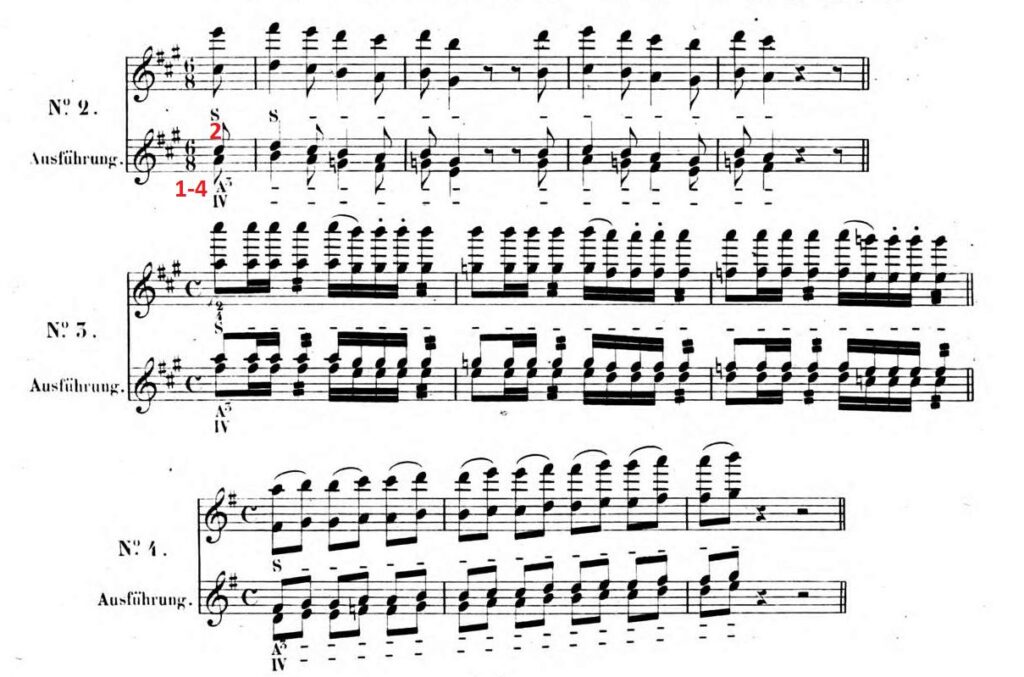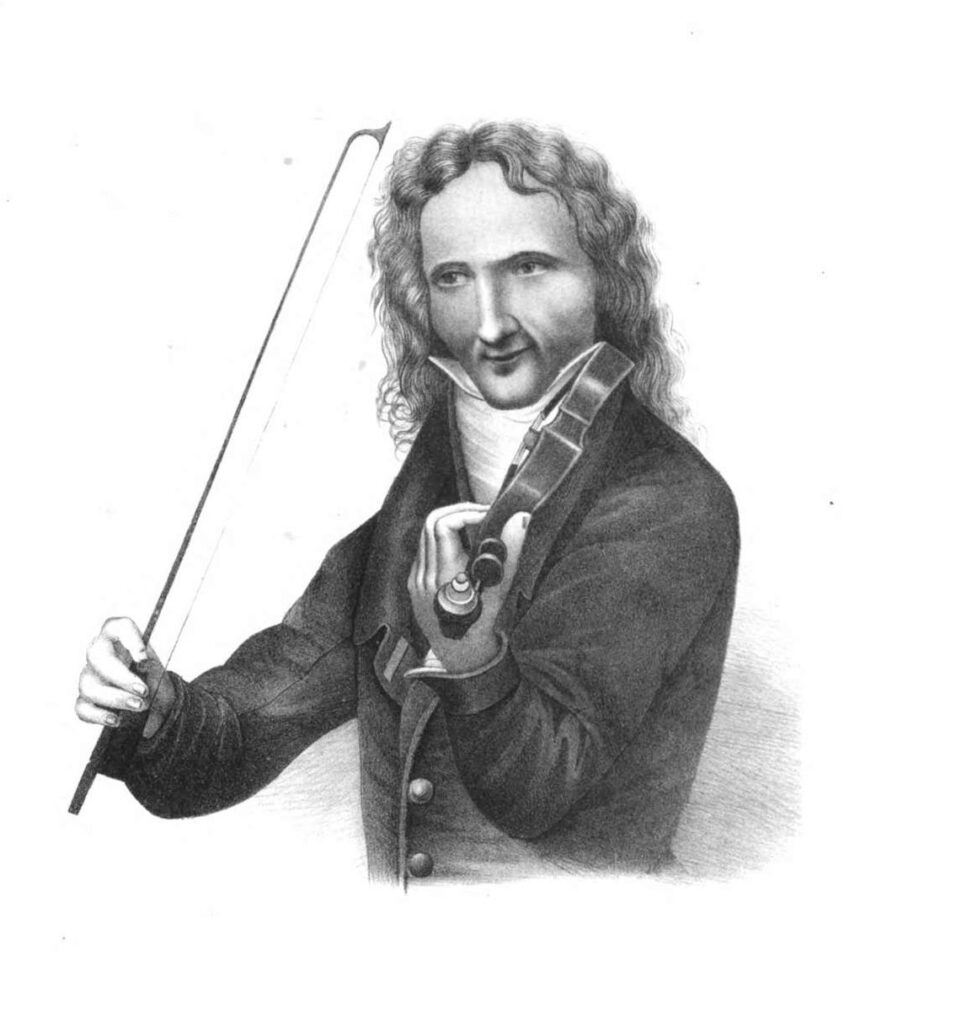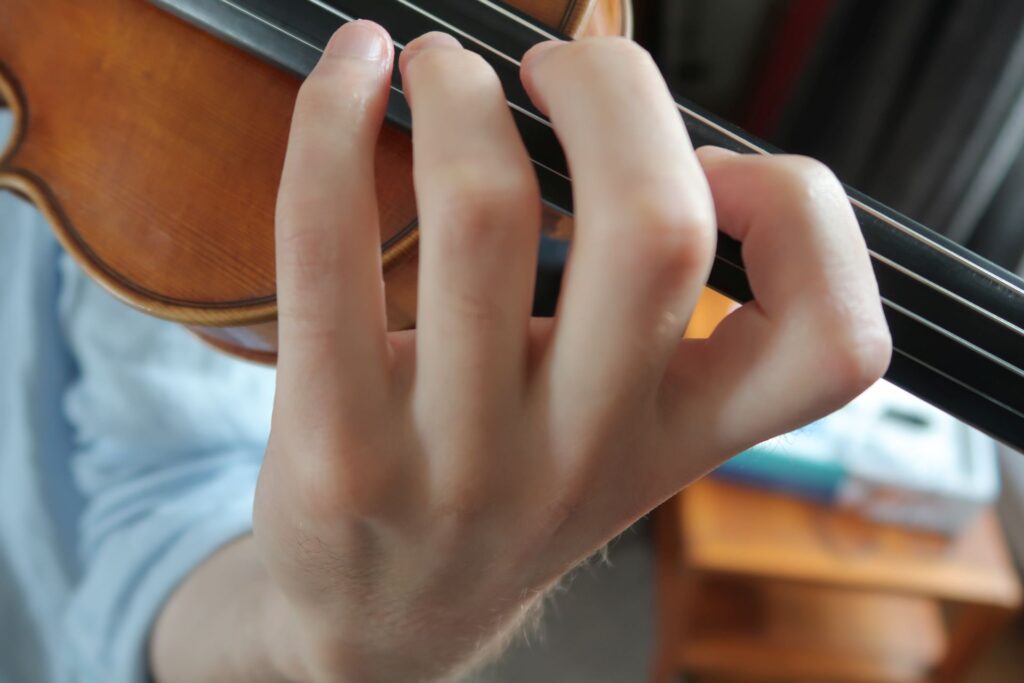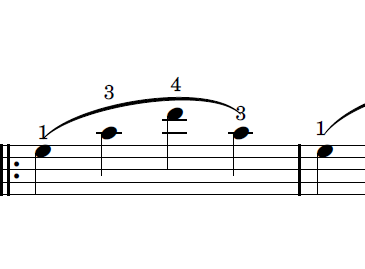Let’s explore a curious way of playing tenths and that might be considered more of a musical frivolity than a practical technique. While not the primary approach to tenths, this unique method is worth exploring, particularly for its historical charm and occasional practicality.
In our earlier lessons, we delved into the significance of a well-established hand frame as a foundation for mastering tenths. This involves positioning the 1st and 3rd fingers in an octave double stop, while the little finger extends a third above the 3rd finger, thereby creating the tenth interval. However, there is a different way that draws inspiration from the legendary Niccolò Paganini—a technique that Paganini himself occasionally integrated into his playing.
This technique involves combining a flageolet note with a stopped note to create the interval of a tenth. While not always the most practical way to perform tenths, it’s fun to explore this alternative approach. Carl Guhr (1787-1848), a violinist himself, a contemporary of Paganini and an avid admirer, documented this method in his book “über Paganini’s Kunst die Violine zu spielen” (On Paganini’s Art of Playing the Violin). Guhr’s insights shed light on Paganini’s creative exploration and provide a window into his unconventional techniques.

In these examples from Guhr’s book he notates the sounding notes on the top line and the fingerings on the bottom line. The 2nd finger always plays the lower note of the tenth. The flageolet is played with the 1st and 4th finger (the 1st finger is stopped and the 4th finger is placed lightly on top of the string a perfect fourth above the 1st finger).
It’s important to recognize that while this technique will not replace the more conventional way to play tenths, there are instances where it can serve as a compelling alternative. Consider this unconventional technique as a delightful addition to your violin toolkit—a chance to pay homage to Paganini’s innovative spirit. While practicality often steers our technical choices, moments of musical exploration and imagination are equally valuable.
Just as Paganini pushed the boundaries of violin technique in his era, you can draw inspiration from his audacious approach. Whether you choose to incorporate this technique occasionally or simply indulge in its historical charm during your practice sessions, remember that embracing diverse techniques contributes to your growth as a versatile and creative violinist. So, let curiosity guide you when practicing these unconventional tenths—a testament to the enduring legacy of Paganini and the ever-evolving landscape of violin artistry.


